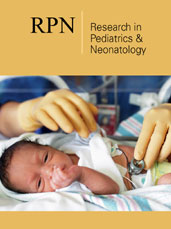Assessing Emotion Recognition in Adolescents After Traumatic Brain Injury: A Neuropsychological Cohort Study by Brenda Hussey- Gardner* in Research in Pediatrics & Neonatology_ The Journal of Pediatrics

Introduction
A recent Saudi study [1]
showed that TBI is the most common pediatric trauma and could be linked with
harmful consequences. Deficits in the ability to evaluate emotional information
are implicated in TBI. Researchers indicate that lasting emotion recognition
deficits are common among adolescents who have suffered TBI [2]. Although
adolescents who have TBI are
generally discharged following rehabilitation hospitalization, some adolescents
need additional rehabilitation interventions in the post-injury period,
including outpatient services [3]. Studies showed that more than half of TBI
adolescents are at risk of presenting with emotion recognition difficulties.
Preschoolers and elementary
school students were mostly affected by TBI consequences in Saudi Arabia [1].
Survivors of adolescents TBI commonly result in emotional, behavioral and cognitive
deficits [2]. However, emotion recognition deficits following TBI become
obvious at age of adolescent hood and above [4]. Parents rate behavior disturbance
and emotion changes as the most difficult and persistent problem following TBI.
Emotion recognition requires the quick processing of motivations and emotional
reactions of others. Essential emotional stimuli are conveyed by facial and eye
expression [5]. Assessing adolescent’s abilities to understand emotion from
facial expressions indicates that such skills are subject to developmental
improvement mainly among adolescents with TBI
https://crimsonpublishers.com/rpn/fulltext/RPN.000576.php
Crimson
Publishers: https://crimsonpublishers.com/
For more
articles in The Journal of Pediatrics,
Please
click on below link: https://crimsonpublishers.com/rpn/



No comments:
Post a Comment